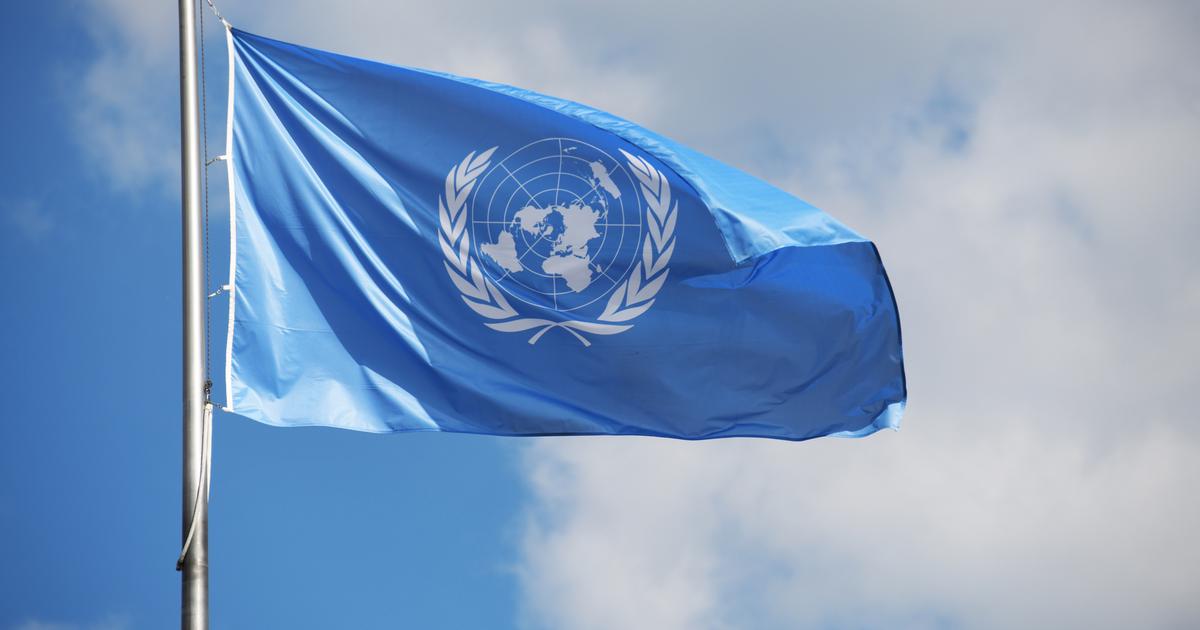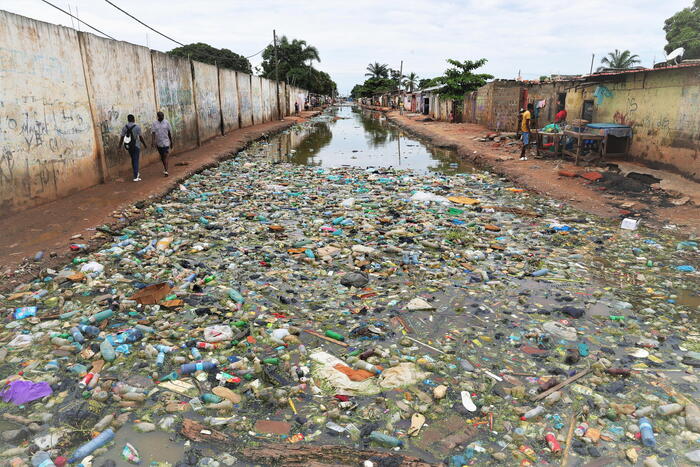Without going into the pathological diagnosis of Argentina or the debate over the solutions in sight, there is an issue that could promote a small positive change: a modernization in intellectual property, a key area for development and trade policy, and an issue -completely- off the agenda. On this note, why Argentina never signed a patent cooperation treaty to which 157 other countries adhered. And, in particular, why this accession, which has half the sanction of the Senate, awaits to be treated in Deputies 25 years ago.
What do patents have to do with Argentine "evils"? Keep in mind these concepts: "green shoots" and "arrival of investments", items postponed, but always declaimed in electoral campaigns.
It is that, for these "outbreaks" to arise, there must be – in other aspects – innovation. For people willing to innovate (research or create something new, discover a process or a certain technology), some incentive is needed (in addition to intellectual restlessness).
Or at least, to know that, once I have created that "something", I will be able to commercialize it and that the State will protect my creation from counterfeits and copies. Protection occurs through what is known as the intellectual property system, or patent system.
I will care a lot that this is the case because in the years that my patent lasts (usually 20) I will have exclusivity in the exploitation of my "thing-idea" and I will be able to recover the money I had invested in the development. So, able to invest again.
There are those who are against the patent system, but those who believe that it is a virtuous circle, understand that a country with rising patent applications is on the road to strength. And that a nation with stagnant or declining patents suffers from "poor health" in terms of innovation.
The keys to intellectual property
You can patent a creation in your own country or in another, depending on where you want to market and / or produce the item in question.
Looking at the rise in the number of patents processed in the last three decades in countries such as Brazil, Mexico or, to a lesser extent, Chile, and comparing them with those of Argentina, the slight but sustained decline here (especially since the 90s) is striking.
"Between 1998 and 2002 there was a peak of 5,500 patents and today we are at 3,000 to 3,500 per year. More than 80% were entered by foreigners, so clearly the intention to come to the country is now lower, "said Lucas Lehtinen, lawyer and executive director of the Master's Degree in Intellectual Property at Universidad Austral.
He is one of those who claim that the decline is due to a specific fact: that Argentina never acceded to the Patent Cooperation Treaty (PCT), which 157 countries signed.
What is the PCT
The treaty promotes itself as a cooperative environment that, compared to the "classic" way of patenting, allows intellectual property to be processed with fewer bureaucratic hurdles, in a cheaper way and in more countries at the same time.
Although it was finalized in the 90s, the PCT dates back to the 70s. It was an initiative of the World Intellectual Property Organization (WIPO) and Argentina, curiously, participated in its drafting.
Here there has been hesitation for 25 years about signing or not, but 90% of the countries in Asia, almost 90% of those in Africa, all of Europe, Oceania, North America and Central America have joined the PCT. In South America, Brazil, Chile, Colombia, Peru, Ecuador, French Guiana, Guyana and Suriname.
They didn't sign it. Venezuela, Bolivia, Paraguay and Uruguay.
Neither does Argentina, although many believe that the treaty would facilitate not only the international registration of ideas from the "national plant" but also the possibility of getting investors in other markets, since PCT offices offer applicants technical reports with these details, which they stimulate (or not), depending on the realistic possibilities they see in different parts of the globe for the invention.
Patent figures
A limitation of this note is that, although the National Institute of Industrial Property (INPI) provided some hard data, although Clarín insisted for more than a month, they did not detail how many patents are approved per year and how many are rejected. They only reported requests received in the last decade.
They report that between 2013 and 2022 there was a stagnation in patent applications initiated by domestic individuals or companies. They are around 490 per year, on average. In an airy country, those requests would perhaps grow. Those processed by foreigners fell by almost 30% between 2013 and 2022.
In addition to patents, the INPI receives (to a lesser extent) applications for "utility models", which are products that already exist and are given a "twist", such as a cleaning machine with a new mechanism to clean areas of difficult access.
It is essential to note that, since 2013, only more than 12% of the patent applications reported by the INPI were initiated by locals. Almost 88% were foreigners. And, as said, in absolute numbers, they tend to fall.
Adding all the applications for registration (patents and utility models), in ten years, the drop in orders reached 26%.
In favour of the patent treaty
In the institutional repository of the National University of La Plata there is a work entitled "Contribution to the debate in Argentina on the Patent Cooperation Treaty". Its author, a former member of the Directorate of Intellectual Property of that house of studies and a graduate in Communication, is Alejandro Cafiero (brother of Santiago, the Minister of Foreign Affairs and Worship of the Nation).
Cafiero wondered why Argentina had never joined the PCT. He cites three reasons: "The lack of a national intellectual property strategy, misconceptions about the Treaty andopposition from some national pharmaceutical companies."
Those that express it publicly are those nucleated by the Industrial Chamber of Argentine Pharmaceutical Laboratories (CILFA). The other two in the sector, Cooperala and CAPGEN, said that on this issue they preferred to "pass".
Clarín asked for an opinion from the entity that brings together foreign laboratories, CAEME. While a priori it might seem foreseeable that the position of that entity would lean in favour of the PCT, they did not want to respond on the subject either.
The PCT, arguments and counterarguments
Those who did respond were the members of CILFA, the most important chamber of national laboratories. In a score against the PCT, they assured that, if the treaty is implemented, "the obstacles to competition for local companies will increase, affecting their viability and sources of employment."
They added that "the PCT implies a transfer of sovereignty over legislative policy on patents and industrial development" and that "in the pharmaceutical market, the PCT indirectly promotes the importation of foreign legislation and the adoption of foreign patentability criteria."
These criteria, they said, "have led to the spread of patents that do not meet the patentability criteria of our law, granted for minor developments, which end up creating barriers that hinder and even make impossible legitimate competition in the drug market."
The pharmaceutical industry appears as one of the most sensitive to legal changes in terms of patents. Photo: Shutterstock.
In this context, in 2012 an inter-ministerial resolution was signed that "limits the variety of pharmaceutical and biotechnological products that can be patented", in the words of Lehtinen, which questions this measure.
The lawyer assured that a potential accession to the PCT would not imply changes in national patent regulation: "The PCT is only an administrative mechanism that facilitates the export of national innovation and the incorporation of technology from abroad." Lehtinen likened the treaty to a multi-lane highway replacing an old, back-and-forth route.
However, unlike laboratories, he does believe that "it would be necessary to review local patent law and the administrative rulings that accompany it."
He gave examples of what happens in practice. He describes a system with threads that hinder its proper functioning: "If I own a patent in Argentina, someone copies my invention and I want to make a complaint so that a precautionary measure is ordered, the Justice will first analyze, with an expert, if that patent is null or valid. But, instead of taking 15 days, as the law says, it takes months. All of this could be improved."
As for the argument against the Treaty that the main beneficiaries of the PCT would be the countries and companies with the greatest technological development, such as the United States, Japan and Germany, the data is that even with patents in decline, foreign orders (88% of the total) are already taking over the spectrum of applications to the INPI.
Without delving into other substantive reasons that, as Clarín reported and CILFA discussed, could fuel the rejection of the PCT, the logical question is whether the patent system, as it is, works well.
Or rather: Could this international treaty encourage Argentine innovations to grow here and be projected to the world?
An aging bill
There is a legislative project of accession to the PCT stranded 25 years ago in Deputies. It was conceived by the executive branch in the years of Carlos Menem and in 1998 it obtained the half sanction of the Senate. For the specific matter it addresses, it does not lose parliamentary status.
In 1998, the Senate gave half assent to the PCT accession project. Since then it has been waiting in Deputies.
Clarín spent several weeks exchanging messages with the representatives of the three commissions of Deputies that must evaluate that text.
The explanation of why the project is not voted on in the chamber seems like a laughable dance: it happens that, even though the project was treated in the committees of Foreign Relations and Worship, Industry and General Legislation, and even though it had adhesions and rejections, as the case may be, those predictions "fell" (lost validity) every time some or all of the members of the commissions were renewed.
And that is how 25 years ago the project awaits to be voted in the enclosure.
How an idea or creation is patented today
By conventional means (non-PCT), every time an individual, company, university or scientific organization wants to patent a development outside the country, it must file numerous papers in the intellectual property offices of each nation. Each with its bureaucracy.
Patience is required: before approving or rejecting the order, those offices will seek (worldwide!) to understand if there is really a novelty in the invention.
You can't patent something that already exists. The check-up process takes months. In some countries, years. Argentina (says a source who requested anonymity) is one of the places where the process can be very long.
Now, what things can be patented?
Intellectual Property Requirements
The INPI registers all types of non-artistic inventions, which, on the other hand, are the subject of the National Directorate of Copyright.
One of the three requirements that an "idea-creation" must meet to be patentable, Lehtinen explained, is "that it be a novelty; It must be a new development or element, or the union of two that already existed, but had never been conceived together."
Folding guitar, an example of innovation taken from the WIPO website.
For example, the windshield wiper, which combines a motor and a drainer.
The second requirement is inventive height: "It means that creation is not a no-brainer for someone who knows the subject. For example, viagra. It was known to be good for the heart, but not that it could produce that other effect."
The third aspect is "that it has industrial application, in the sense that it can be marketed".
Why process a patent
According to Lehtinen, "when you want to obtain an intellectual property right outside the country, you are probably thinking about exporting it or even developing it in that other market. It seeks to have exclusivity to avoid copies or counterfeits, "he said.
Cafiero, like him, is one of those who believes it necessary to enter the PCT system, but only wisely, with a plan.
In his report he highlights international experiences, as they show how advantageous it could be here, "especially for universities", since the PCT allows them to "protect their research results in several countries", "develop joint ventures" and achieve "international collaboration, among other activities".
Obstacles to patenting in Argentina
If Argentina were to join the PCT there would be more patenting opportunities abroad, but the country would also have to adapt its local regulation and accept that more foreigners would find Argentina an option.
Clarín asked INPI about its position on the PCT. They replied that they are a technical body and that, therefore, it is not a matter of their competence.
On the drop in patent figures, they said that "all industrial property registrations are voluntary and not mandatory."
While they did not give details about the time it takes them to evaluate the patent applications they receive, information circulates that there are cases that exceed the decade. The problem is that the 20 years of a patent begin to run from the moment the application is filed.
Lehtinen dimensioned the seriousness of this matter: he confirmed that "it may take 10 to 12 years until the INPI rejects the request", that then possibly an administrative appeal will be initiated that could take "a couple of long years", and when the person finally goes to Justice, "maybe with 15 years in tow, maybe it will take another 5 litigation". In short, he summarized, "by the time the process ends, the patent has already fallen."
If we add to this that, according to the lawyer, "the INPI tends to apply restrictive criteria, particularly towards chemical-pharmaceutical inventions (N. de la R.: by the 2012 resolution mentioned above), a situation that affects non-resident applicants to a greater extent", it is easy to understand what follows.
That the company that perhaps would have mounted its development here (and perhaps would have generated jobs), discouraged, does not. He may not try again to get a patent in Argentina.
The view from the Conicet
If the PCT offered better opportunities and Argentina signed it, many of its positive effects should have an impact on the scientific and technological sphere.
In contact with Clarín, the manager of Technological Linkage of Conicet, Sergio Romano, confirmed in writing that they have patent applications filed through the PCT. How?
Scientific research with samples of the SARS-CoV-2 virus, in an institute of Conicet. Photo: EFE
Two sources in the sector confirmed that this happens in two ways: 1) through the dual nationality of some researchers and, 2) through agreements with universities and scientific associations abroad.
Romano, subtle, explained that "the protection of a patent in the different territories carries amounts of management and maintenance in dollars that increases for each country where protection is sought (regardless of PCT management)."
It said that it would choose "not to rush definitions, but to build better capacities first," and stressed that Conicet staff attend WIPO trainings "to take some international learnings from the PCT system."
The next step, he said, could be "to study and see possibilities to build common criteria to create a Unified Patent Court and a Mercosur Patent Office."
End of the procedure
Alejandro Cacace is a deputy for San Luis, an expert lawyer in Constitutional Law, Human Rights and Citizenship and handles with solvency the concepts around the PCT.
He shared some "pros" and "cons." On the one hand, he admitted that "giving protection to foreign patents goes a little against the economic interest of trade policy as a country."
On the other hand, he qualified that position by stating that "we must be seated at the table of WIPO. Isolation does not work because there are many companies that could come to make investments."
Then? "We should have a 180-degree look at trade policy. A more integrated and open economy. If not, we are left out of global value chains."
He said that "the issue has been ideologized between protectionism and liberalism." That "we must have an intelligent trade policy that values the benefits of integration, seeking to negotiate."
His proposal?: "Do what most countries that seek insertion do. It is not a question of going out and approving this project just like that, but of offering it within the framework of a trade agreement. You will be asked to sign the PCT. You accept, but you ask for something in return."
PS
See also





/cloudfront-eu-central-1.images.arcpublishing.com/prisa/OOLBKF5K4VFN7EA7IFFA4PMVUE.jpg)



